I am developing a Siamese Network for Face Recognition using Keras for 224x224x3 sized images. The architecture of a Siamese Network is like this:
For the CNN model, I am thinking of using the InceptionV3 model which is already pretrained in the Keras.applications module.
#Assume all the other modules are imported correctly
from keras.applications.inception_v3 import InceptionV3
IMG_SHAPE=(224,224,3)
def return_siamese_net():
left_input=Input(IMG_SHAPE)
right_input=Input(IMG_SHAPE)
model1=InceptionV3(include_top=False, weights="imagenet", input_tensor=left_input) #Left SubConvNet
model2=InceptionV3(include_top=False, weights="imagenet", input_tensor=right_input) #Right SubConvNet
#Do Something here
distance_layer = #Do Something
prediction = Dense(1,activation='sigmoid')(distance_layer) # Outputs 1 if the images match and 0 if it does not
siamese_net = #Do Something
return siamese_net
model=return_siamese_net()
I get error since the model is pretrained, and I am now stuck at implementing the Distance Layer for the Twin Network.
What should I add in between to make this Siamese Network work?
